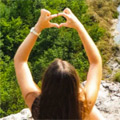A Tuxedo vs a Suit - Why do we draw such differences
When it comes to formalwear, two options that often come to mind are tuxedos and suits. Although both of them are worn for dressy occasions, they are distinct from each other. Understanding the differences between them is crucial to dress appropriately for various events. The cultural significance of these formalwear options goes beyond just fashion; it reflects social norms and expectations. This paper aims to explore the reasons why we draw such differences between tuxedos and suits.

Tuxedos vs. Suits: What are the Differences?
Tuxedos and suits have a different history and origin. Tuxedos, also known as dinner jackets, were first introduced in the 1860s as a more comfortable alternative to the formal tailcoat. On the other hand, suits have been around since the early 19th century, evolving from the more relaxed lounge suit.
Style, fabric, and accessories are other factors that differentiate tuxedos and suits. Tuxedos are traditionally black or midnight blue and have a satin trim on the lapel, buttons, and side stripe of the trousers. Suits, on the other hand, come in various colors and fabrics, and the lapels and buttons are made of the same material as the rest of the suit.
The occasion or event is one of the primary distinctions between tuxedos and suits. Tuxedos are typically worn for black-tie events or formal occasions, such as weddings, galas, and cultural events. Suits, on the other hand, are more versatile and can be worn for business meetings, job interviews, or semi-formal events.
The Social Context of Tuxedos and Suits
Suits are the most common attire for business and professional settings. They are considered appropriate for job interviews, meetings, and presentations. Dress codes and expectations in the workplace also often require employees to wear suits or other formal attire.
Suits convey professionalism, confidence, and respect for the work environment, making them a popular choice for business attire. Wearing a well-fitted suit can also have a positive impact on how individuals perceive themselves and how others perceive them in the workplace. Apart from formal events, suits and tuxedos can also be worn to various entertainment events and occasions. Parties, proms, and other celebrations may have specific dress codes, and suits or tuxedos can be appropriate options depending on the event's formality. Similarly, gambling dealers and those working in the gambling industry may be required to wear a particular type of formal attire, such as tuxedos or suits, to create an ambiance of luxury and sophistication. Dress codes for venues such as casinos and nightclubs may also dictate whether a tuxedo or suit is more appropriate attire. Online casinos aim to replicate the luxurious and glamorous atmosphere of their land-based counterparts, bringing the excitement of gambling to the comfort of one's home. This is achieved not only through the use of cutting-edge technology and attractive visuals but also by reflecting the dress code and elegance of traditional casinos. Players can virtually experience the high-class environment and sophistication of a casino night, complete with the fashionable attire like tuxedos and suits. For those seeking the best online casino, Australia would be a good option, if your aim is to experience the luxury and glamor we talked about yourself.
Tuxedos are the go-to formal attire for black-tie events and formal occasions. These may include weddings, galas, charity events, and cultural events such as the opera and ballet. Black-tie events often have specific dress codes, and a tuxedo is the most formal attire one can wear, conveying luxury, elegance, and prestige.
Tuxedos may vary in style and accessories, but they typically feature a black or midnight blue jacket with satin lapels, black pants with a satin stripe down the leg, and a bow tie. The choice of a tuxedo indicates that one is willing to follow formal dress codes and is aware of the cultural significance of such events.

The Significance of Formal Wear in Society
Formal wear reflects societal expectations and cultural norms regarding attire for specific occasions. Formal attire indicates respect for the event or occasion and demonstrates the wearer's understanding of the social significance of dress codes. It is a way of showing respect for tradition and cultural norms.
Fashion and media play a significant role in shaping the perception of formal wear. The portrayal of suits and tuxedos in movies, television shows, and fashion magazines influences how people perceive these outfits. Fashion trends also have a significant impact on the evolution of formal wear, with styles changing over time to reflect current fashion trends.
Formal wear can convey status, power, and identity. For example, wearing a tuxedo to a black-tie event signals social status and success. In a business setting, a suit can convey professionalism and authority. Formal wear can also be used to express cultural and personal identity, such as traditional dress for cultural events or a personal style statement.
What We Learned
Understanding the differences between tuxedos and suits is essential to dress appropriately for various events. Formal wear reflects cultural norms and societal expectations and can convey status, power, and identity.
Fashion and media play a significant role in shaping perceptions of formal wear, and it is essential to understand the impact of these factors on our understanding of these outfits.
Overall, dressing appropriately for different occasions is a sign of respect for tradition, culture, and the significance of the event.
Hits: 14523 | Leave a comment
Tags:menswear, tuxedo, suit, business suit























